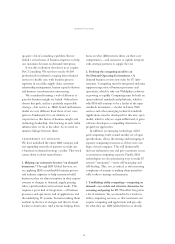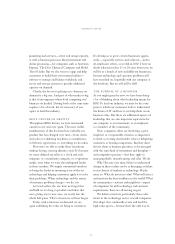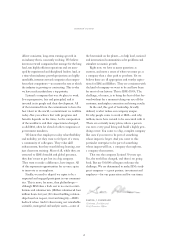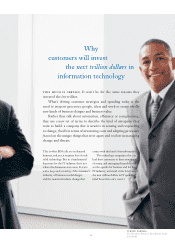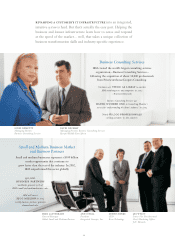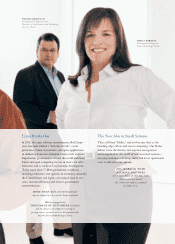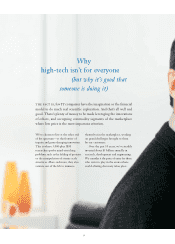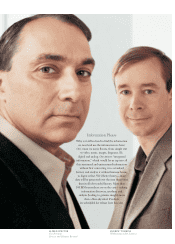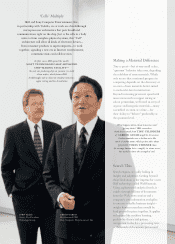IBM 2002 Annual Report Download - page 26
Download and view the complete annual report
Please find page 26 of the 2002 IBM annual report below. You can navigate through the pages in the report by either clicking on the pages listed below, or by using the keyword search tool below to find specific information within the annual report.
24
first, and most important,
this new model is ultimately open
and collaborative.
It shares resources
—
by allowing the computing assets within any
individual enterprise, or across the networked systems of the world,
to work together on common problems.
It masks technical complexity
—
by behaving a lot like the human autonomic nervous system,
spontaneously performing functions like
fending off attacks, balancing workloads, or isolating and
repairing failing components.
And it creates variable options
—
by allowing customers to access and pay for computing
just as they do with water or electricity.
because the old approach is based on what technology can do,
not on what business needs to do.
The existing computing model in most companies today has
hard edges. It was built to drive the productivity and efficiency of a
particular business process, or department, or functional unit. The
benefits were substantial, but they were fragmented.
Here’s the problem: Businesses today need to respond in real
time to whatever the day brings
—
a change in supply or demand, a
shift in the preferences of buyers, students or citizens, the vagaries
of capital markets or the aftermath of a natural disaster. And that
requires an infrastructure that’s different in concept and capability
from anything that has come before it. It’s what we at IBM call the
On Demand Operating Environment.
Why
it’s time for a new
computing model




